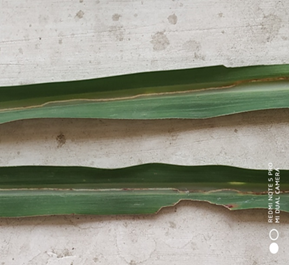Top Borer
Top Borer
It is unique among the borers pest and infests in sugarcane during all the stages of crop growth. It occurs as a regular and major pest in the subtropical region and It is active from March to November. Maximum damage is occurred during April to July as it feeds on sugarcane.
Damage Symptoms
• Due to attack of 1st and 2nd brood of top borer during I earlier stages of sugarcane plants have showed reddish streaks together with small holes in the plants.
• The young larvae bore into the leaf through midrib and consequently the main shoot or cane stalk.
• Formed deadhead but cannot be pulled out easily.
• In grown up canes due to the infestation dead heart formation induces sprouting of the lateral buds giving a 'bunchy top' appearance.
Management
• Planting on time may be altered wherever the borer is severe during these months.
• Intercropping with spices reduces top borer incidence.
• Setting up of sex pheromone traps fie 50 numbers/ha reduces moth population.
• Hand collection and destruction of egg masses is effective to reduce population of insect.
• Isotima javensis is an efficient natural parasitoid should be release in problem areas.
• The egg parasitoid Trichogroma japonicum@50000/ha released 4 to 6 times at interval of 10 days during second and third broods was found to reduce damage of this borer.
• In severe cases of infestation, Cartap hydrochloride 4G @25kg /ha or Chlorantraniliprole 0.40 % GR @ 18.75 kg/ha may he applied in the root zone, covered with soil followed by irrigation against third brood in the 1st week of June.



